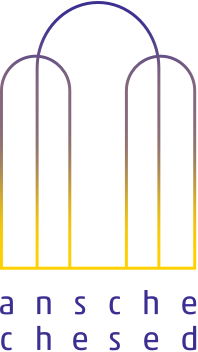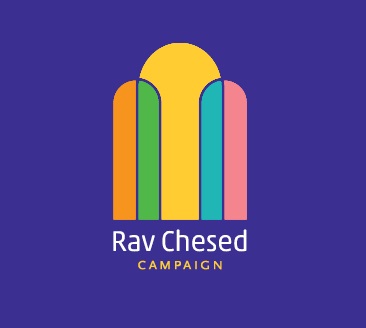Parashat Ki Tisa
Religious communities build holy places and fill them with sacred vessels.
American liberal Judaism’s great saint (one-time AC member) Abraham Joshua Heschel claimed Judaism is a religion of sacred time, not sacred space.
That’s only half true. Yes, we treasure holy moments, like Shabbat, but we also feel the power of a holy land and we love places for prayer and study. Beautiful and functional, serene and lively, open and symbolic – holy space awakens us spiritually, connects us in fellowship, and enables us religious communities to live a spiritual mission.
Parashat Ki Tisa is about the right and wrong ways to build sacred space.
Which is very convenient for us, because Ansche Chesed is embarking on our first capital campaign in more than 15 years. We named our campaign Rav Chesed, or “abundant kindness,” based on today’s reading, the dramatic revelation of the 13 middot [attributes] of divine mercy. I’m sure those phrases, including Rav Chesed, are familiar to you from Yom Kippur.
Today I’d like to explain to you what this Torah passage means to me and why I proposed this name, “abundant kindness,” to focus and inspire our building efforts at AC.
And I hope you’ll join us on March 9 for a festive launch of Rav Chesed. That night will be a fun party, with great music, food and drink and a presentation by an architectural historian about the history of our building. No one will solicit funds on March 9, but you can learn about the proposals and ask your questions about the whats, whens and hows of the Rav Chesed campaign. Today, I’ll talk about the whys of Rav Chesed, linking the Torah to our own project to build the world through ever more abundant kindness.
For the last two weeks, for the first half of today’s parasha and again for the coming two weeks, we read about constructing the Mishkan — the portable shrine — with precious metals and stones, luxurious and brilliantly colored fabrics.
Today, in Ki Tisa, we learn the names of the artists who create all that beauty: Bezalel b. Uri b. Hur of the tribe of Judah, and Ohaliav b. Achisamach of the tribe of Dan. Through Betzalel’s grandfather, Hur, he belongs to the royal tribe of Judah, which will one day produce David. And Betzalel is doubly blessed: by Midrashic tradition, Hur was married to Miriam. So Betzalel is also connected to the priestly tribe of Levi. How fortunate: Miriam’s grandson and Moses’ nephew! When the Mishkan went out to bid, who got the contract? Certainly his family connections had no influence. I’m sure he was just a really talented architect. You have to imagine that most people suspected the fix was in, and that the Mishkan really belonged to the 1 percent.
That’s why appointing Ohaliav of Dan is so important: Says the Midrash [Tanhuma 13]: “There is no more prominent tribe than Judah nor one lowlier than Dan. What did God do? Make them cooperate, so that none will be arrogant, none will despair, and all spirits will be equal before the Lord.” A sacred project must be a republic, literally, belonging to everyone, of whatever diverse gifts they possess, rich and poor, wherever they fit in the ecosystems. Including the plebeian Ohaliav as partner to the aristocratic Betzalel proclaims that we must work on this together, a whole community, sharing the burdens and achievements so that our sacred space is truly maasei yadeinu, the work of all our hands.
Let’s talk about funding. When the Mishkan project began, it was funded by goodwill. No one had to contribute, only those asher yidvenu libo, whose hearts moved them to give. That worked great, raising everything they needed to get off the ground. But starting something and perpetuating it are different. A sacred space should function and endure for another tomorrow and another one after that, for a next generation and another one. Beyond the initial flush of enthusiasm, it needs ongoing support. And that demands that everyone feel an equal share of the shrine. So Moses doesn’t rely on goodwill and inspired hearts. In today’s parasha, Moses institutes a poll-tax, where everyone gives the exact same half-shekel that will be used for Am Israel’s ongoing worship. The rich cannot give more and the poor don’t give less, because each soul has an equal stake. Aristocrats cannot buy their way into more than one share, and the poor cannot shirk the responsibilities of full communal membership.
The Torah seems to think this is all good. Really, it’s only partly good. As a parable, it asserts the value of human equality. But in practice, it fails to achieve it, because poll-taxes are regressive. They seem to treat everyone the same, when actually they strain the poor and cut the rich a break. If I and a jobless person and Jeff Bezos all pay the same amount, that’s unfair. I have a job so I can pay my share; Bezos could retire, and write a check for everyone’s half-shekel and never miss it; desperately poor people may have to sacrifice food or medicine to come up with a half-shekel. So while the Torah expresses something important about human equality, it doesn’t really get the job done in wrestling with real human inequality.
In the real world, some have more and some less. Some give more or give less. Can we still affirm communal equality amidst economic and philanthropic inequality? Our Sages evaluated religious gifts by qualitative, not quantitative measures. When it comes to sacred space, sacred vessels, sacred worship, it really is the thought that counts. The Mishnah in Tractate Menachot [13.11] expresses this by noting that the Torah uses the exact same words to describe very expensive and very modest gifts:
Regarding offerings of cows and bulls, it is said: an gift of sweet savor. Regarding bird offerings, it is said: an gift of sweet savor. Regarding flour offerings, it is said: an gift of sweet savor. This teaches that whether they give much or give little, all gifts are of equal value, as long as the donors direct their hearts toward heaven.
That’s building right, and how we will build at Ansche Chesed: we include everyone, so we cooperate with people different than ourselves. And we evaluate gifts not by the number of zeros on the check, but see past that, to the open hand and open, loving heart in every gift.
That’s when it works right. Today the Torah also addresses the debacle of religious gifts gone wrong: the Golden Calf.
The people’s hearts certainly are passionately moved about giving this particular gift. They are so eager to donate they snap their earrings right off their ear lobes to present to Aaron, so that he would fashion for them a symbol of strength, that would “go before them,” leading them through the desert.
Why did they need this idol? With Moses lingering atop Mt. Sinai, they were frightened. They could not bear to see a leadership vacuum where Moses belonged. To replace empty space, they wanted a visual symbol of power.
In contrast, what was at the very center, the most important part of the Mishkan that Moses instructed them to build? An Ark, containing the stone tablets, atop of which was the kaporet, a sculpture of gold, beaten into the outstretched wings of the Cherubim, forming a kind of throne. And what royal presence sat atop that throne? Empty space. Because the God of Israel cannot be made visible in an object, even in shiny precious metals or luminous stones.
Moses directed the people to build a sacred space filled with sacred vessels that propel us toward questions asked but never fully answered. By centering the Mishkan around an empty throne, Moses called us to aspire to holiness pursued, never fully attained, a spiritual and moral order that is, in the words of the poet R. Yehuda Halevi, “revealed to the heart, not to the eye.”
Religious spaces should be beautiful, as our sanctuary is beautiful, and the beauty should awaken us to religious consciousness. I have no doubt that the Golden Calf was beautiful. But I don’t think it awakened them to anything beyond itself.
The empty space above the cherubs says: we are on a journey. The radiance and might and muscle of the Golden Calf says: we have arrived. Look and see how impressive we are. If the beautiful object you place in your shrine is a golden calf, it undermines the community of religious, moral, spiritual purpose you are trying to sustain.
We all recognize the seductive wrong ways to build religious space. People can lavish so much attention on the externals that we fall prey to what we might jokingly call the “Edifice Complex,” where the community exists for the sake of maintaining the grandeur of its space. The opposite is true: the beautiful spaces that religious communities create are not the point; they are the means to help us pursue religious, moral, spiritual aspirations.
The wise way to build religious space, to avoid the seductive, idolatrous edifice complex, is to always ask yourself: What do we need this project for? What will this help us accomplish? How is it in service of our deepest values?
And that is why we chose to name our campaign Rav Chesed, abundant kindness.
A few years ago I started asking people if they knew what the name of our synagogue meant. I learned that we had some explaining and educational work to do so that all our members knew and could be inspired by our name Ansche Chesed, People of Loving Kindness. Our name is an aspiration, to build the world through deeds of care, generosity and love. The capital campaign is about opening our building to do that better.
This quality of abundant kindness is precisely what God reveals to Moses, in the aftermath of this idolatrous debacle. Moshe persuades God not to give up on the Jewish people, and to disclose to him once again God’s ways and glory. Hashem descends in a cloud, passes before Moses and announces who and what the Divine really is: rahum v’hanun, gracious and merciful, erech apayim, infinitely patient, rav chesed v’emet, abundantly kind and faithful.
In a wonderful Talmud passage [RH 17b], our Sages depict this scene as God teaching Moses how to pray. In moments of crisis or danger failure, Hashem teaches, when you must repent for moments of idol worship, when you must get beyond golden calves, recite these words. They will help you summon up these attributes in Me and in yourselves. Summon up mercy and grace. Summon up patience. Summon up abundant love and kindness.
We strive to be people of Chesed. And we do already exemplify that — celebrating together, mourning together, housing people who are homeless, feeding people who are hungry. Why should we improve our sacred space? To create a community of even more love. It’s not for the sake of the building. It’s for the sake of the Chesed, and for the people who might find it here.
An ancient Rabbinic collection of homilies, Avot d’R. Natan [B.38], proposes two definition of Rav Chesed that speak to me about what we should build here in Ansche Chesed, the Community of Kindness, to make ourselves even more abundantly kind.
One: marbeh gemilut chesed im kol ba’ei olam. We should imitate God in doing many acts of kindness to every single human being. Wherever you come from, when you come here, you’ll be met with a kind welcome, and we’ll help you. Another, matteh klapei chesed, when facing the tension between justice and mercy, between what people deserve and what they want, we will tilt toward kindness generosity. You don’t have to earn a warm welcome from God, and you should not have to earn one from us either. In our shul, we will be kinder than we are demanding.
Rav Chesed is a plan to open up our building: open our offices, our lobby, our social spaces, our doorways and our hearts. As Moses, Betzalel and Ohaliav filled the Mishkan with holy vessels, through Rav Chesed we will fill our sacred space with more acts of love and generosity, more friendship and the holiest thing of all — more people.





